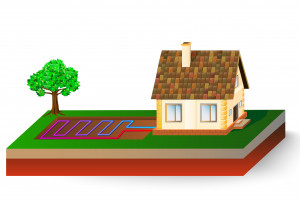Recently I was asked to speak at the Rensselaer Renewable Energy & Sustainable Living Fair in New York, which took place on October 20, 2018. I was introduced to Frank Na...
The Second Most-Common Mistake Made by Geothermal Designers

Let's be honest, most homeowners do not understand how ground source heat pumps (GSHP) work. Not even close. In an effort to compensate for this most homeowner will ask the contractor installing the system any question under the sun to get more comfortable with the system. You name it, they'll ask it. Often times they will be highly critical of your work too. For this reason, it's very important for our small, yet quickly growing, industry to install systems correctly and not leave a black eye on the industry.
In a past post I've outlined three of the most commons mistakes I see geothermal designers make.
- Underestimating the importance of accurate peak heating and cooling load calculations
- Not giving proper consideration to the many option that are available
- Over complicating matters
Today, I'll focus on the second aspect.
Not giving proper consideration to the alternatives
It would be difficult, to say the least, to install a horizontally-trenched or horizontally-bored ground heat exchanger (GHEX) in an area where granite exists at the surface. It could be cost prohibitive to install a vertically-bored GHEX in an area where drilling through a highly fractured rock formation that produces a lot of water would be part of the process, especially when ample land area is available for the installation of a horizontal loopfield.
Limiting factors aside, any type of closed-loop GHEX (vertically-bored, horizontally-bored, or horizontally-trenched) can be designed to function properly in any type of soil for a given location. As far as the heat pump is concerned, it really only cares about the water flow rate through the coil and water temperature entering the unit itself. If you could design any number of different GHEX configurations, all with the same pumping power requirements at a given flow rate while delivering the same water temperature to the GSHP, system performance (efficiency, capacity and resulting electricity bills) will also be the same.
When it comes to closed-loop GHEX design, the options are limitless. A four-pipe horizontally-trenched system can be designed to deliver the same performance as a vertically-bored system. A system that uses a slinky pit can be designed to deliver the same performance as a horizontally-bored system. A vertically-bored GHEX with standard grout can be designed to deliver the same performance as one that uses thermally-enhanced grout. Granted, for most situations, one configuration will require installation of more pipe material and have higher pumping power requirements than the next, but you get the point. Whether dealing with highly conductive limestone versus dry sand or a vertically-bored GHEX versus a horizontally-trenched GHEX, etc., as long as factors that are critical to design are properly accounted for, your system design will work.
The goal in GHEX design is to deliver a certain level of system performance for the lowest up-front cost to the customer. Any designer who can strike that balance will be two steps ahead of his competitors.
This post was written by Ryan Carda, a geothermal instructor at HeatSpring Learning Institute. Ryan teaches both IGSHPA Certified Installer trainings and Advanced Design Training with Loop Link Certification
Leave a comment
Related Posts

Since we work in a metropolitan area, the loop field can be a challenge at times. As we sub this part of the job out to a well driller, it can be more of a challenge, as ...

When I started my company ten years ago, I wanted to focus on radiant floor systems and mechanical systems for large custom homes. By and large, I have been successful in...